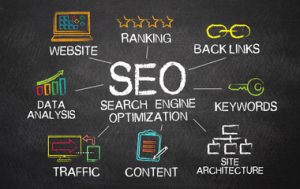SEO Services Boise are designed to boost online visibility and foster genuine connections with your audience. These techniques include keyword optimization, content development and backlink auditing. They also reshape how search engines understand your website and prioritize its pages.

To optimize your site, start by identifying its goals and needs. This will help you create a plan that meets your business objectives.
Content creation services help businesses create valuable, relevant and engaging content that improves search engine visibility and drives organic traffic. This is done through a range of activities, including keyword research, meta tag optimization, content development and backlink services. These services can be highly time-consuming and require the expertise of several professionals to ensure that they meet a high quality standard.
Incorporating keywords in content is essential to SEO success. However, it is important to balance keyword usage with relevance and readability. Too many keywords can detract from the user experience, while using irrelevant terms can lead to penalties from search engines. It is also important to use LSI (Latent Semantic Indexing) keywords, which are related words and phrases that help search engines understand the context of a page.
A good SEO agency will be able to provide you with a detailed and comprehensive content marketing strategy that includes targeted keyword research, content optimization, backlink services, and technical optimization. They can also develop a content calendar and establish metrics for measuring performance. This will allow you to see the real return on investment in your campaign.
The benefits of content marketing and SEO include increased online visibility, improved search engine rankings, more website traffic, and measurable business growth. These services can also help build brand awareness and improve customer engagement. However, it is crucial to remember that the results of SEO can take some time to manifest in sales and lead generation.
The key to successful content marketing and SEO is understanding the audience. This means identifying the questions and problems that your target audience is trying to solve. Providing relevant and valuable information can help them make informed buying decisions, which can drive conversions.
Link building
If you’re looking to get your website or business ranked in search engines, link building is essential. This is because links are one of the main factors that search engine algorithms use to determine a website’s relevance and authority. In addition, they are a key component of the SEO process, and the more quality links you have, the higher your ranking will be for related keywords.
To build quality links, you need to create content that others will want to link to. This could be a blog post, an infographic, or even a video. However, it’s important to understand that link building is a process, and it will take time to see results. The key is to focus on high-quality content and work with a service provider that has experience in your industry.
A good SEO service will know how to use a variety of methods to build links, including guest posting, broken link building, and social media promotion. They will also be able to conduct a technical audit of your site and suggest improvements. They will also know how to track keyword rankings and improve your SEO strategy.
Another important consideration when choosing a link building service is their ethics. White hat services follow Google’s guidelines and are based on natural marketing strategies. These strategies are effective in the long term and produce high-quality links from relevant websites.
Grey hat tactics are those that fall somewhere in between white and black hat techniques. They are usually more scalable than white hat methods, but they can still be risky and may not be ethical. Using a grey-hat technique can damage your reputation and lead to penalties from search engines.
On-page optimization
A key part of any SEO strategy is on-page optimization, which includes changes and improvements made to a website’s content and source code. This type of optimization helps search engines better understand a website’s content and how it matches search intent, which can lead to higher rankings in search results. It’s important to optimize pages for both users and search engines, and to avoid over-optimization, which can lead to negative ranking impacts.
On-page optimization can be done in a variety of ways, including keyword analysis, site structure, mobile-friendliness, title tag optimization, meta tags, and URL optimization. These improvements can be made at a page level or at the domain level and are typically within your control, as they don’t require coordination with other websites.
The content of a webpage is what drives its rankings, so on-page optimization starts with quality content. This can include writing relevant, helpful information about your product or service and incorporating keywords in natural ways. It also means using multiple formats to reach users who prefer different types of content, including blogs, infographics, and videos. Keeping your content fresh and up-to-date is another way to improve on-page optimization by demonstrating that you’re an authority in your industry.
Having a well-optimized website is essential to increasing your organic traffic, and it’s the first step in achieving your business goals. The right SEO Services can help you rank for the right search terms and attract more qualified customers. Intellibright offers scalable on-page optimization services that can be customized to your specific needs and goals. We’ll make sure your content aligns with search intent, your metadata is optimized, and your technical performance meets the standards that search engines look for when evaluating a webpage.
Reputation management
Online reputation management is a critical part of SEO branding. It involves monitoring and influencing how people perceive your brand online, including social media, reviews, and search engine results pages (SERPs). ORM services include responding to negative feedback and promoting positive content that aligns with your business values and builds trust. It also includes fostering a strong online image that influences customer decisions and encourages them to purchase from you.
When you share positive reviews on your website and social media, it shows potential customers that you are a trustworthy business and value customer feedback. It also increases your credibility and boosts your SEO ranking. It’s important to respond to all reviews in a timely manner. Responding to negative reviews in a professional manner is especially important, as it will show that you care about your customers and are working to resolve any issues they may have.
Marketing agencies can offer ORM services to their clients as an additional service to boost their visibility and improve their search engine optimization strategies. These services can be a great way to build a strong online presence, increase client retention, and drive growth. They can also help marketing agencies establish themselves as industry leaders and improve their client referral rates.
In order to make the most of ORM, you need to implement the right strategies. This will involve creating a consistent brand voice, monitoring social media sentiment, and responding to complaints promptly. It will also involve analyzing and identifying trends in the market. It is a long-term process that will require constant attention and effort. But the benefits are worth it. A strong reputation can significantly enhance your online visibility and brand perception, which in turn will lead to increased sales.
Technical optimization
While on-page optimization and link building are crucial for search engine optimization (SEO), technical optimization is equally important to ensure your website’s content and keywords rank well. This type of SEO focuses on the back-end infrastructure of your site, including the HTML code and server setup. It also includes the website’s loading speed and mobile responsiveness. It’s about creating a seamless setup that elevates your digital presence while fostering long-term success.
While the technical elements of a website aren’t as visible as content and keyword optimization, they have a huge impact on SEO and site performance. For example, if your website’s page speed is slow, it can significantly impact your rankings and user experience. In addition, a slow website can lead to high bounce rates and lost conversions. Fortunately, there are several ways to improve your website’s page speed, such as optimizing images, minimizing CSS and JavaScript files, and enabling browser caching.
A solid technical optimization strategy can help your business achieve higher search engine rankings and increase website traffic, which can ultimately result in more leads and sales. It can also help you establish a consistent presence in the search results, improving your visibility and brand awareness. However, it’s important to set realistic expectations with your clients. Explain the benefits of your services and provide data on typical timelines for achieving results. This will reassure your clients and build trust. You can also use tools like Ahrefs’ ROI calculator to help you quantify potential return on investment. This will give your clients a clear picture of the financial benefit they can expect to receive from your SEO services.



